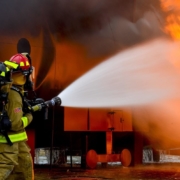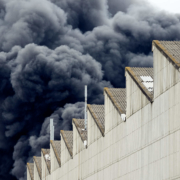‘Tanks A Lot!’ — Your Guide to Above Ground Storage Tanks
Most likely, your commercial property has an above-ground storage tank (AST). When’s the last time you had your tank(s) inspected? Odds are, your above-ground storage tank has taken the back burner in regards to safety regulations and guidelines.
Don’t worry, that’s why we’re here at VFS Fire & Safety Services—to help you navigate any changes that need to be made to your safety protocols!
Above Ground Tank Requirements
The National Institute for Storage Management (NISTM) located in Houston, Texas, outlines regulations and guidelines that should be followed for your commercial property’s safety.
In fact, NISTM has a course called “Tanks 101” that provides all the information that you need to know about your above-ground storage tank. The course overview talks about both aboveground and underground tanks in horizontal and vertical configurations.
Here’s a quick rundown of what NISTM has to say. “Having designed and built a good tank, the next problem is to ensure it remains safe and leak-free. The focus is on the well-known tank inspection standard API 653.”
The NISTM also claims that the following basic principles are key to understanding the safety of your above-ground storage tank:
- “Shell design
- Floating roofs
- Foundations
- Fixed roofs
- Venting
- Hydrostatics tests
- Materials of construction”
As a commercial property owner, it’s important to be aware of these factors when building a new tank so that future inspections run smoothly.
Are you still itching to hear more from NISTM? You’re in luck! NISTM is soon hosting the 14th Annual National Aboveground Storage Tank Conference and Tradeshow this December. Visit the link above to learn more.
Common Challenges with Tank Inspections and Testing
Now for some common challenges regarding tank inspections and testing.
The federal requirements for above-ground storage tanks say there should be frequent inspections and evaluations for any bulk storage container.
Similarly, The United States Environmental Protection Agency (U.S. EPA) provides a downloadable “Spill Prevention, Control and Countermeasure Plan (SPCC) Program” that contains a Bulk Storage Container Fact Sheet.
The fact sheet states you must “determine, in accordance with industry standards, the appropriate qualifications for personnel performing tests and inspections, the frequency and type of testing and inspections, which take into account container size, configuration, and design.”
The EPA also provides the difference between containers, which include:
- Shop-built
- Field-erected
- Skid-mounted
- Elevated
- Equipped with liner
- Double-walled
- Partially buried
Required Testing
The inspections that are required for bulk storage containers include:
- “Test or inspect each container for integrity on a regular schedule and whenever you make material repairs
- Frequently inspect the outside of the container for signs of deterioration, discharges, or accumulation of oil inside diked areas. This visual inspection is intended to be a routine walk-around and inside the container’s supports and foundations,
- You must retain testing and inspection records for 3 years. EPA recommends that formal test records or reports be retained for the life of the container.”
It’s important to keep reports and inspections organized so you have evidence and reference of inspections that have been performed as well as when the next routine inspection should take place.
Integrity Testing
Some integrity tests that aren’t federally mandated, but HIGHLY encouraged include:
- Visual inspections
- Hydrostatic testing
- Radiographic testing
- Ultrasonic testing
- Acoustic emissions testing
- Signs of deterioration
- Accumulation of oil
- Other systems of non-destructive testing
With the amount of testing that is required for any property or business owner, sometimes reports and small inspections fall through the cracks.
Additionally, there are frequent changes in industry standards. Take the extra step of checking in with your Fire and Safety Inspection team to ensure all above-ground tank requirements are being met.
Cargo Crisis got you down? Us too. Learn more about how the cargo crisis might be affecting your industry in the future and why marine safety should be a top priority with a large number of cargo ships currently being stalled.
How long do you keep your safety inspection records and paperwork? It can be tempting to chuck the paperwork into the trash and forget about the details of your inspection.
But, did you know that after a safety inspection of your above-ground tank, you’re supposed to keep those records for a minimum of 3 years?
Check out our recent blog for more inspection guidelines for your commercial property.













